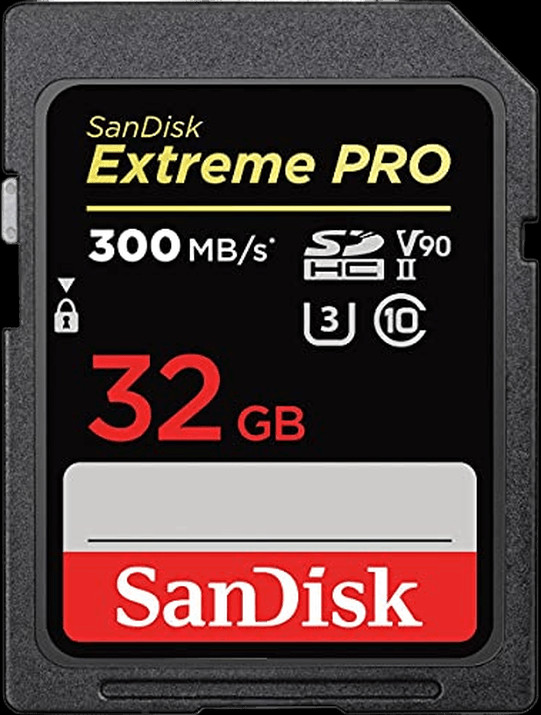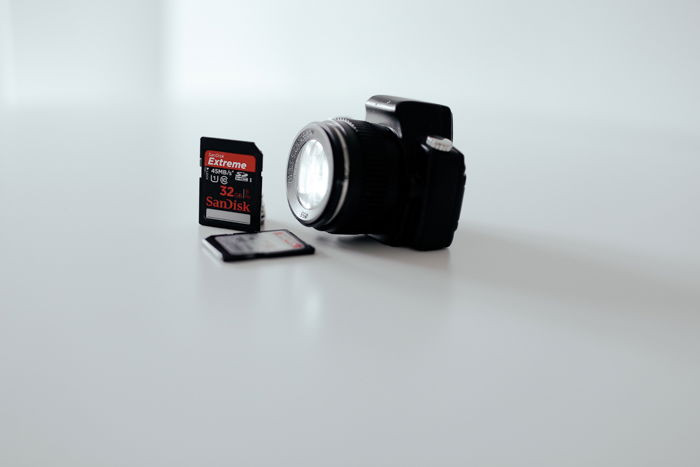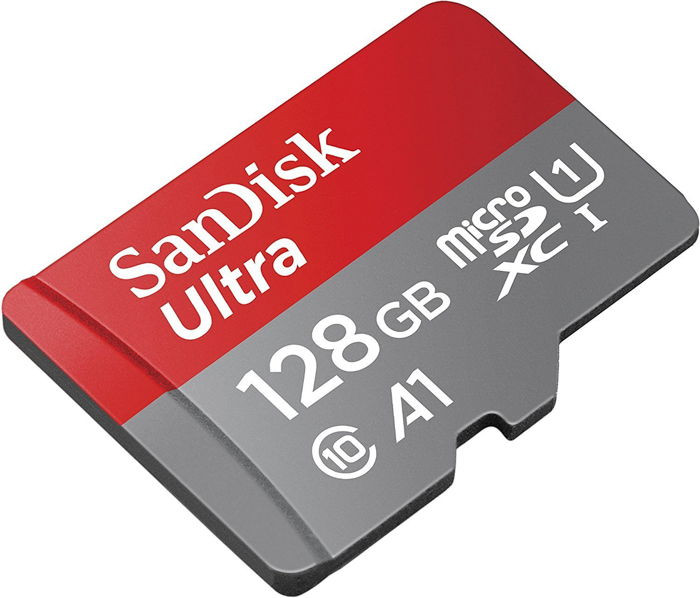Memory cards are essential for digital photography, acting as the film for digital cameras. Whether you’re using a DSLR, mirrorless camera, or even a smartphone, understanding memory card capacity is crucial. A common question photographers ask is: How Many Photos Can 256gb Hold? This article will delve into this question and explore how different factors influence the number of photos you can store on various memory card sizes, including 256GB, 128GB, 64GB, and 32GB.
Fast and Reliable
 SanDisk 32GB Extreme PRO SDHC UHS-II Memory Card
SanDisk 32GB Extreme PRO SDHC UHS-II Memory Card
Understanding Memory Card Capacity: 256GB and Beyond
To accurately estimate how many photos a 256GB card can hold, we need to consider image file formats: JPEG and RAW. These formats differ significantly in file size, directly impacting storage capacity.
JPEG vs. RAW: Understanding Image File Formats
Digital cameras primarily offer two main image file formats: JPEG and RAW. JPEG is a compressed image format widely used across digital devices and online platforms. It’s a convenient format because of its smaller file size, achieved through compression that discards some image data deemed less essential. This compression makes JPEGs ideal for quick sharing and storage when extensive post-processing isn’t needed.
 Overhead shot of photography gear including a camera, notebook, pen, coffee, and memory card illustrating digital photography workflow and storage needs.
Overhead shot of photography gear including a camera, notebook, pen, coffee, and memory card illustrating digital photography workflow and storage needs.
RAW, on the other hand, is an uncompressed format that captures all the image data recorded by the camera sensor. Think of it as the digital negative of your photograph. RAW files retain the full dynamic range and color information, offering significantly more flexibility for editing and adjustments in post-processing software. Photographers choose RAW when they prioritize image quality and intend to fine-tune their images.
Different camera manufacturers may also have their own proprietary RAW formats, such as Canon’s CR2 and CR3, and Nikon’s NEF. DNG (Digital Negative) is an open-standard RAW format developed by Adobe, aiming for cross-compatibility across different camera brands and software. Regardless of the specific RAW format, they all share the characteristic of being larger in file size compared to JPEGs and offering superior image data.
File Size Differences: JPEG vs. RAW
The difference in file size between JPEG and RAW is substantial. JPEG files are compressed, making them significantly smaller. A JPEG from a 20-megapixel camera typically ranges from 5MB to 10MB, depending on image complexity and camera settings.
RAW files, being uncompressed and containing all sensor data, are considerably larger. For the same 20-megapixel camera, a RAW file can be around 30MB. This size can vary slightly based on bit depth and specific camera models, but the key takeaway is that RAW files demand significantly more storage space.
 Camera and memory card on a white background, emphasizing the importance of memory cards in digital photography and storage capacity.
Camera and memory card on a white background, emphasizing the importance of memory cards in digital photography and storage capacity.
Estimating Photo Capacity: 256GB, 128GB, 64GB, and 32GB
Given the file size differences, let’s estimate how many photos you can store on different memory card sizes shooting in RAW and JPEG formats. We’ll use the average file sizes discussed: 30MB for RAW and 7MB for JPEG.
RAW Files (approx. 30MB per photo):
- 32GB Memory Card: Approximately 1,092 RAW photos
- 64GB Memory Card: Approximately 2,184 RAW photos
- 128GB Memory Card: Approximately 4,368 RAW photos
- 256GB Memory Card: Approximately 8,732 RAW photos
JPEG Files (approx. 7MB per photo):
- 32GB Memory Card: Approximately 4,700 JPEG photos
- 64GB Memory Card: Approximately 9,400 JPEG photos
- 128GB Memory Card: Approximately 18,800 JPEG photos
- 256GB Memory Card: Approximately 37,600 JPEG photos
Note: These are estimations. Actual capacity may vary slightly based on camera model, image complexity, and memory card formatting.
Choosing the Right Memory Card: Size, Speed, and Type
Selecting the right memory card involves considering several factors beyond just capacity. The ideal choice depends on your photography needs, camera capabilities, and workflow.
Memory Card Size: Capacity for Your Needs
Larger capacity cards like 256GB offer the convenience of storing a vast number of photos and videos, ideal for travel, event photography, or any situation where you shoot extensively without immediate access to a computer for offloading images. However, it’s also worth considering the risk associated with storing a large volume of data on a single card. Card failure or loss could mean losing a significant amount of work. Some photographers prefer using multiple smaller capacity cards as a form of backup and organization.
Memory Card Speed: Performance for Shooting Modes
Memory card speed is crucial, especially for shooting in continuous burst mode or recording high-resolution video. Faster cards, indicated by speed class ratings and read/write speeds (MB/s), allow for quicker data transfer and buffer clearing in your camera. This is essential for capturing action shots, sports, wildlife, or shooting 4K or 8K video. However, your camera’s specifications will determine the maximum speed it can utilize. A high-speed card might not offer its full advantage in a camera with slower processing capabilities.
Types of Memory Cards: SD, MicroSD, CF, and CFexpress
There are various types of memory cards, each with different form factors, speeds, and capacities. The most common types include:
-
SD (Secure Digital) Cards: Widely used in DSLRs, mirrorless cameras, and point-and-shoot cameras due to their balance of size, speed, and capacity.
-
MicroSD Cards: Smaller versions of SD cards, primarily used in smartphones, drones, action cameras, and sometimes mirrorless cameras with adapters.
 SanDisk 128GB Ultra microSD card, showcasing the compact MicroSD format for smaller devices and adaptable to SD card slots with an adapter.
SanDisk 128GB Ultra microSD card, showcasing the compact MicroSD format for smaller devices and adaptable to SD card slots with an adapter.
- CF (CompactFlash) Cards: Larger and more robust, traditionally used in professional DSLRs. While still used, they are being superseded by faster formats.
- CFexpress Cards: The latest generation, offering significantly faster speeds, essential for high-end cameras with demanding video and burst shooting capabilities.
Memory Card System Capacities (Maximum):
- CF: Up to 512GB
- SD: Up to 1TB and beyond (SDXC, SDUC standards)
- MicroSD: Up to 1TB and beyond (microSDXC, microSDUC standards)
- CFexpress: Up to 2TB and beyond
Memory Card System Speeds (Fastest Theoretical):
- CF: Up to 167 MB/s (read/write)
- SD (UHS-III): Up to 624 MB/s (read/write)
- MicroSD (UHS-III): Up to 624 MB/s (read/write)
- CFexpress (Type B): Up to 2000 MB/s (read/write) and beyond
Note: Speeds mentioned are theoretical maximums. Real-world performance depends on the card, camera, and other factors.
Conclusion: 256GB Memory Card Capacity and Choosing Wisely
So, how many photos can a 256GB card hold? As we’ve seen, it largely depends on whether you shoot in JPEG or RAW. A 256GB card can store approximately 8,732 RAW photos or a massive 37,600 JPEG photos. Choosing the right memory card involves balancing capacity with speed and considering your specific photography needs. For photographers shooting primarily in JPEG or capturing video, a 256GB card offers ample space. For RAW shooters, especially professionals, it provides a substantial capacity for extensive shoots while maintaining high image quality. Ultimately, understanding your shooting habits and camera requirements will guide you to the best memory card choice for your photography.
Fast and Reliable
![SanDisk 32GB Extreme PRO SDHC UHS-II Memory Card](https://www.camerareviews.com/wp-content/uploads/2024/02/sandisk-32gb-extreme-pro-sdhc-u